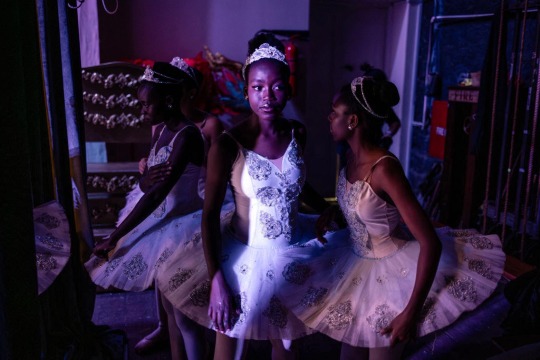#Kenya
Video
Lion cubs by kapshure
35 notes
·
View notes
Text

Elephant tusks being burnt in Kenya
For centuries, the demand for ivory has caused great suffering to innumerable elephants. On April 30, 2016, 105
tons of seized poached tusks from approximately 10,000 elephants were destroyed in Nairobi national park during a public ceremony. The tusks, methodically arranged on metallic pyramids, were burned as if on funeral pyres. The event, widely covered by the media, was intended to make the general public more aware of the struggle to eliminate elephant poaching. With this symbolic gesture, the presidents of kenya and gabon wished to alert the whole world to the gravity of the traffic in ivory. The survival of about 500,000 african elephants is at stake.
3K notes
·
View notes
Text
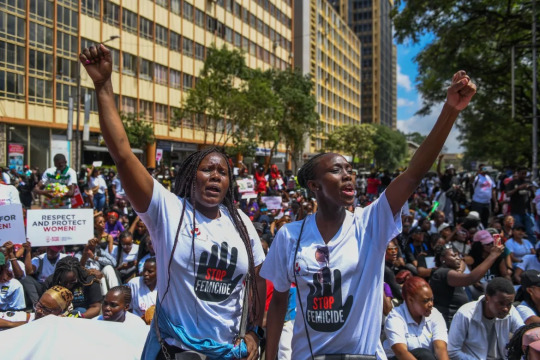
Thousands protest against increasing violence against women in Kenya as they march to the parliamentary building and supreme court in the capital Nairobi [Gerald Anderson/Anadolu Agency]
Published On 27 Jan 202427 Jan 2024
Thousands of people have gathered to protest in cities and towns in Kenya against the recent slayings of more than a dozen women.
The anti-femicide demonstration on Saturday was the largest event ever held in the country against sexual and gender-based violence.
In the capital, Nairobi, protesters wore T-shirts printed with the names of women who became homicide victims this month. The crowd, composed mostly of women, brought traffic to a standstill.
“Stop killing us!” the demonstrators shouted as they waved signs with messages such as “There is no justification to kill women.”
The crowd in Nairobi was hostile to attempts by the parliamentary representative for women, Esther Passaris, to address them. Accusing Passaris of remaining silent during the latest wave of killings, protesters shouted her down with chants of “Where were you?” and “Go home!”
“A country is judged by not how well it treats its rich people, but how well it takes care of the weak and vulnerable,” said Law Society of Kenya President Eric Theuri, who was among the demonstrators.
Kenyan media outlets have reported the slayings of at least 14 women since the start of the year, according to Patricia Andago, a data journalist at media and research firm Odipo Dev who also took part in the march.
Odipo Dev reported this week that news accounts showed at least 500 women were killed in acts of femicide from January 2016 to December 2023. Many more cases go unreported, Andago said.
Two cases that gripped Kenya this month involved two women who were killed at Airbnb accommodations. The second victim was a university student who was dismembered and decapitated after she reportedly was kidnapped for ransom.
Theuri said cases of gender-based violence take too long to be heard in Kenyan court, which he thinks emboldens perpetrators to commit crimes against women.
“As we speak right now, we have a shortage of about 100 judges. We have a shortage of 200 magistrates and adjudicators, and so that means that the wheel of justice grinds slowly as a result of inadequate provisions of resources,” he said.

People gather to protest in an anti-femicide demonstration, the largest event of its kind ever held in Kenya. [Gerald Anderson/Anadolu Agency]

Kenyan media outlets have reported the slayings of at least 14 women since the start of the year. [Gerald Anderson/Anadolu Agency]

A protester holds a Palestinian flag during a march to protest against the rising cases of femicide, in downtown Nairobi. [Brian Inganga/AP Photo]

Women and feminists in Kenya took to the streets to march against the rising cases of femicide. [Brian Inganga/AP Photo]

In Nairobi, protesters wore T-shirts printed with the names of women who became homicide victims this month. [Gerald Anderson/Anadolu Agency]

Protesters react against the rising cases of femicide. [Brian Inganga/AP Photo]
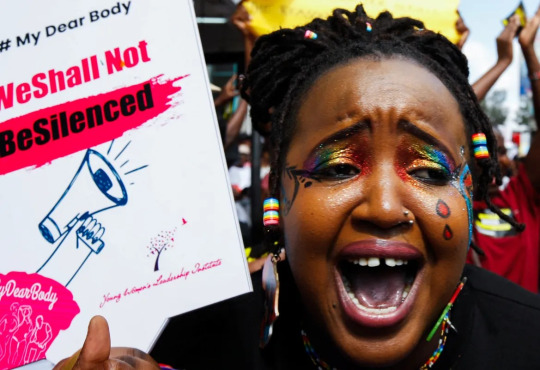
A human rights activist reacts as she attends a protest demanding an end to femicide in the country. [Monicah Mwangi/Reuters]

Protesters gather during the anti-femicide demonstration. [Gerald Anderson/Anadolu Agency]

The crowd, composed mostly of women, brought traffic to a standstill. [Gerald Anderson/Anadolu Agency]
#Kenya#Femicide#Nairobi#There is no justification to kill women#The court systems taking too long to hold perpetrators accountable#The power of women standing together#Please reblog#Western media isn't going to give this the coverage this deserves
1K notes
·
View notes
Text
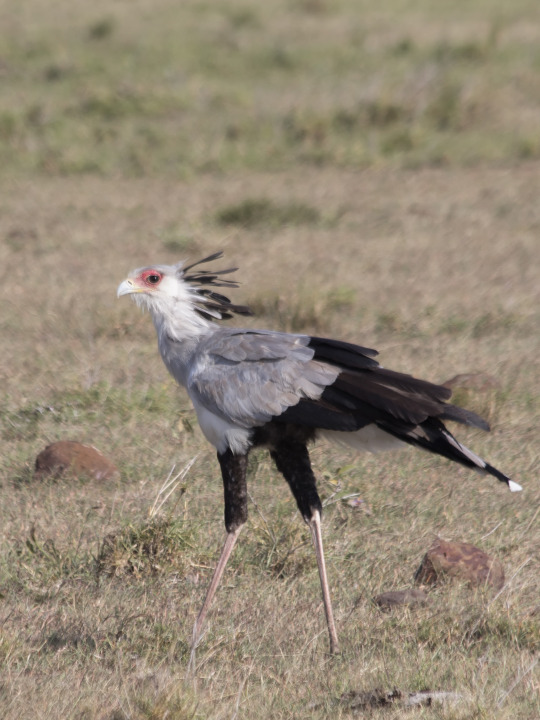

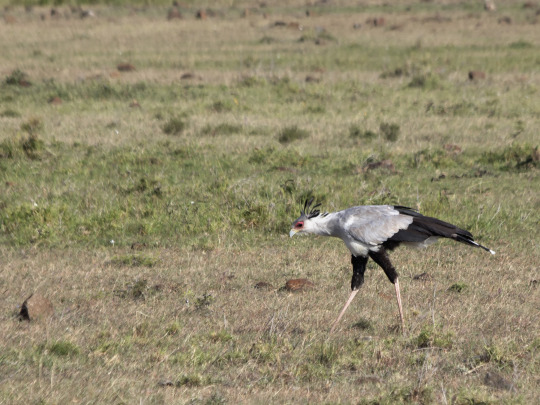
This is a secretarybird, the most alien-looking bird I have ever seen in person. It stands about four feet tall, and hunts lizards, snakes, and other small animals by walking along looking at the ground. It can strike prey with its beak, but often uses its long legs and claws.
I have read that secretarybirds often hunt in pairs or groups, but the two I saw were solitary.
Masai Mara, Kenya, July 2023.
#bird#secretarybird#kenya#raptor#photographers on tumblr#textless#amadee ricketts#hunting#secretary bird#todaysbird
2K notes
·
View notes
Text

Kenyatta International Conference Centre, Nairobi. Karl Henrik Nøstvik.
#brutalism#brutalist architecture#brutalist#interiors#interior#architecture#Karl Henrik Nøstvik#kenya#kenyatta international conference centre#nairobi#africa
1K notes
·
View notes
Text

On January 15, 2019, lone SAS operator Christian Craighead, enters the Dusit Hotel in Nairobi, Kenya, in respond to a terrorist attack. This famous photograph was seen on social media and major news outlets around the world.
Off-duty at the time, Craighead wore his combat gear over jeans and shirt when he entered the complex alone. He was able escort civilians to safety, then went back inside the hotel where he shot and killed two of the four al-Shabaab gunmen.
(Photo courtesy of AFP/Getty Images)
662 notes
·
View notes
Text

Sugarcane is a widely grown crop in the Nile Basin, but its destructive effects on soils, water resources and biodiversity have become increasingly apparent.
As the thirsty crop draws down water resources, aquatic species like the critically endangered Nubian flapshell turtle suffer a loss of habitat, forage and nesting sites.
In an effort to revive soils, diversify diets and incomes, and boost water levels that many animals rely on, communities are implementing agroforestry projects in lieu of monocultures.
The resulting “food forests” attract an array of wildlife while refilling wetlands and river systems where the culturally important flapshell turtles swim.
#good news#nile river#africa#kenya#nubian flapshell turtle#food forest#restoration#turtles#agroforestry#environmentalism#science#environment#nature#animals#conservation#sugarcane
488 notes
·
View notes
Text

Elephants at Sunset, Kenya by Jim Zuckerman
#animals#elephants#kenya#wildlife#nature#sunset#aesthetic#vibrant#travel#landscape#naturecore#curators on tumblr#uploads
840 notes
·
View notes
Text
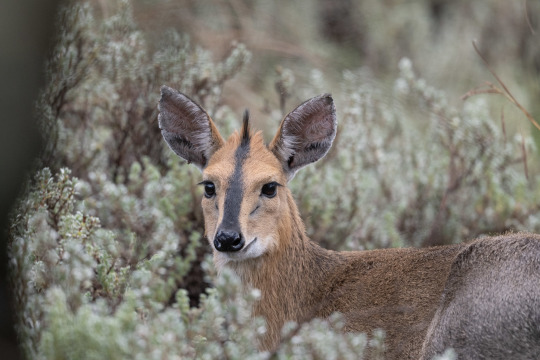
Hinde's bush duiker Sylvicapra grimmia hindei
Observed by joni_overbosch, CC BY-NC
458 notes
·
View notes
Text

A young Kenyan woman holds her pet deer in Mombasa, March 1909. Underwood and Underwood. | National Geographic
view on wordPress
#pet deer#deer#tenderness#mombassa#mombasa#kenya#1900s#national geographic#underwood and underwood#underwood archives#underwood & underwood#huge headgear#headgear#early 1900s
1K notes
·
View notes
Text
"Fencing offers a ray of hope to young people living in Nairobi's poorest neighbourhoods.
Despite a lack of equipment, the sword fighting sport is growing in popularity in Kenya.
They cut a striking group as they wander through Huruma in their pristine white outfits.
These young people are heading for their favourite hang-out spot: the Tsavora Fencing club at the local community centre.
The street becomes their arena as they parry and riposte in front of passers-by.
This is not just a hobby for them: it's a force for good in their lives.
Fencing has helped carve a path away from crime, drugs and other social pressures.
"I used to be a gangster," says Mburu Wanyoike, who is now a coach for Kenya's National Fencing team.
"I was in crime and crime makes you feel isolated. It actually puts you in a place where you are isolated, making you feel depressed, having stress and I chose fencing as a way for me to escape out of the hood and escape that lifestyle."
His journey from delinquency to fencing coach and senior athlete in Kenya's national team has been transformative.
Inspired by the personal tragedy of the death of two friends, Wanyoike pursued training and education in South Africa, ultimately founding Tsavora Fencing in 2021.
Tsavora Fencing has made significant strides.
The team has produced 15 talented fencers who have earned spots in the national squad, with plans to represent Kenya in the African Olympic Qualifiers in Algeria this year.
However, challenges persist, particularly regarding the affordability of fencing equipment.
"Sometimes it is tough when it comes to competing with well-equipped international countries that are well organized, so what we do is just to move on with enthusiasm and obsession. The fact that we don't have the equipment, the limited ones we have, we use them. We don't complain that we do not have equipment, we just use what we got and put in the obsession and the enthusiasm and the passion combined, that's what we do, we fence," says Wanyoike.
Tsavora Fencing Mtaani, an initiative under Tsavora Fencing, offers mentorship and training in fencing to the youth of these impoverished neighbourhoods, shielding them from the dangers of their environment.
With 45 members, most of whom are students, the team serves as a beacon of hope in the community.
Participants are required to become disciplined and put on integrity.
"Initially I had bad company at home but now that I am in fencing, it has kept me busy and now it is a better option for me because I feel happy doing it," says Jemimah Njeri, a 17-year-old member of Tsavora Fencing.
"I cannot imagine myself without this sport because it has kept me very busy. In my area many girls have become teenage mothers and that is not a wonderful life," adds 16-year-old Allen Grace...
As Tsavora Fencing continues to thrive, fuelled by the determination of its members and the support of the community, it stands as a testament to the transformative power of sport in, even the most challenging environments."
-via Africanews, April 1, 2024
250 notes
·
View notes
Text

Solly Levi
@solly_levi on Instagram
599 notes
·
View notes
Text
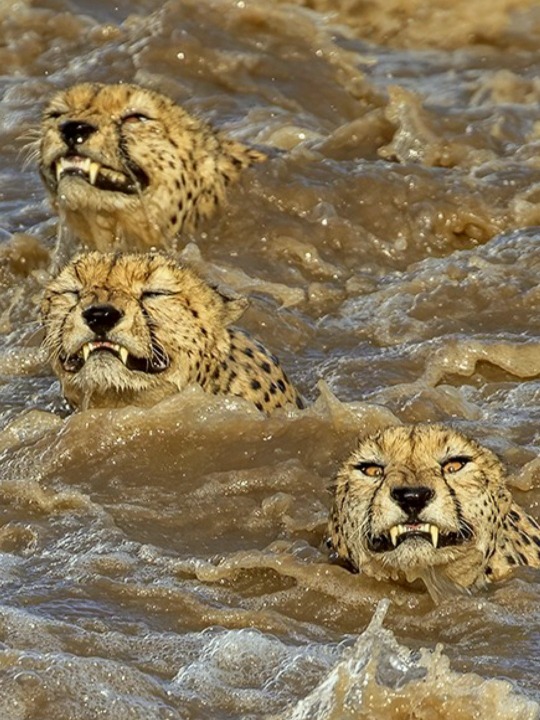
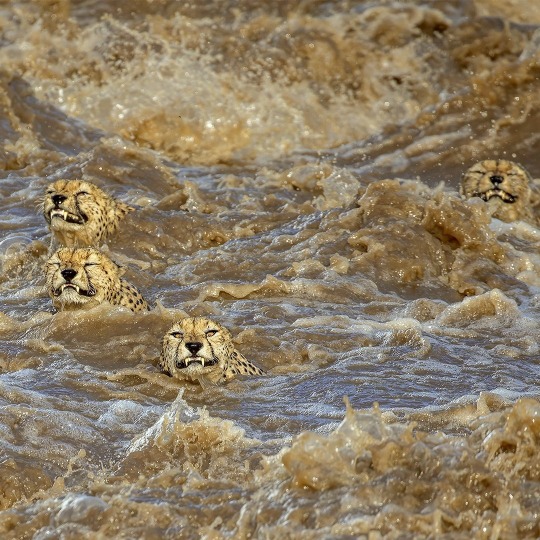
@nature_africa
"Against all odds this unusual coalition of male cheetahs crossed the turbulent Talek river after incessant rains in Masai Mara.
© Buddhilini de Soyza/TNC Photo Contest 2021 @captures_by_buddhilini
477 notes
·
View notes
Text

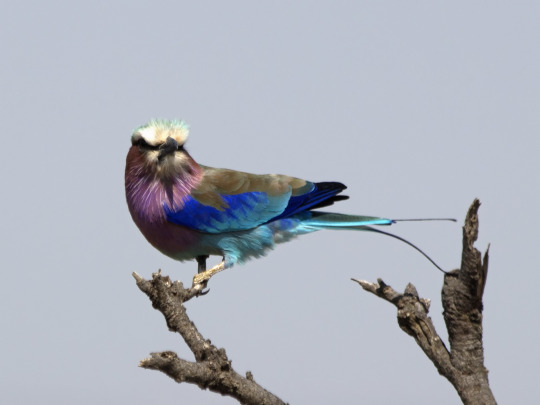
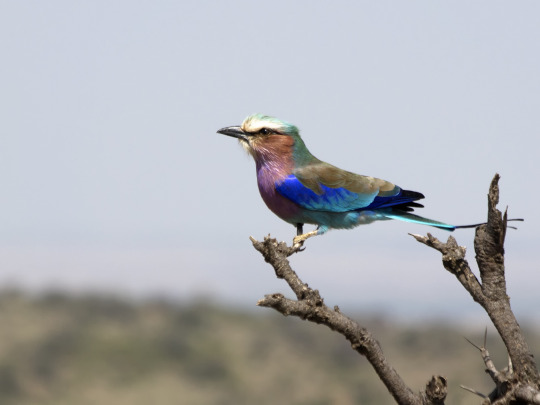
The lilac-breasted roller is a small, beautiful bird which is fairly common in Southern and Eastern Africa. It is Kenya's national bird.
The bird is even more colorful in flight, but I wasn't quick enough to get a clear photo then.
Masai Mara, Kenya, July 2023.
#bird#lilac-breasted roller#fancy#purple#photographers on tumblr#textless#amadee ricketts#todaysbird#blue#green#kenya#masai mara
2K notes
·
View notes
Text
by kyleincpt
#flowers#flowercore#lilies#Kenya#travel#travelcore#landscape#scenery#aesthetic#nature#naturecore#cottagecore#fairycore#curators on tumblr#up
3K notes
·
View notes


